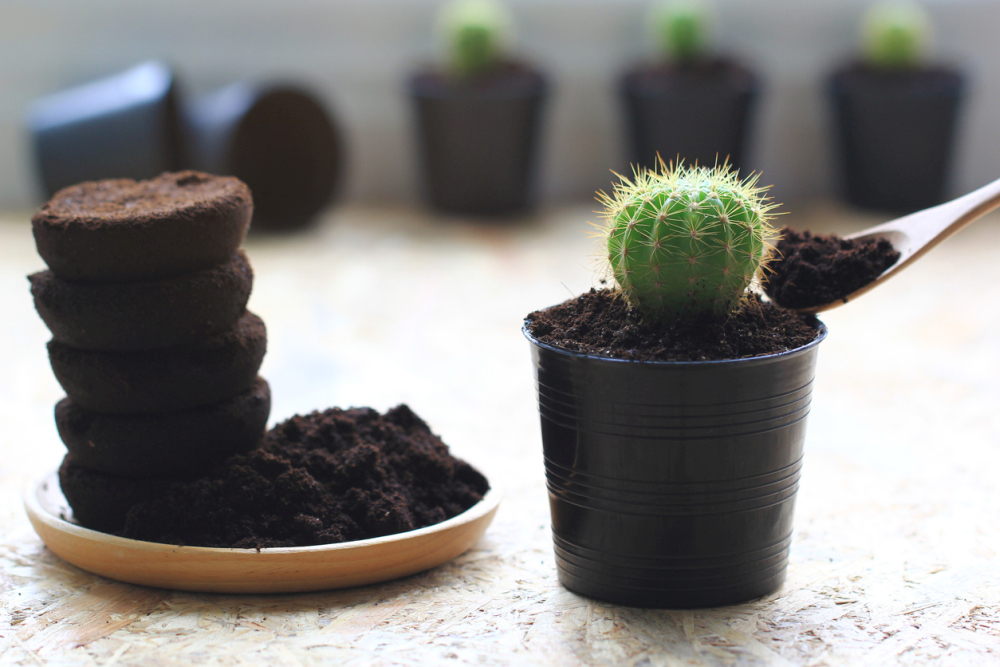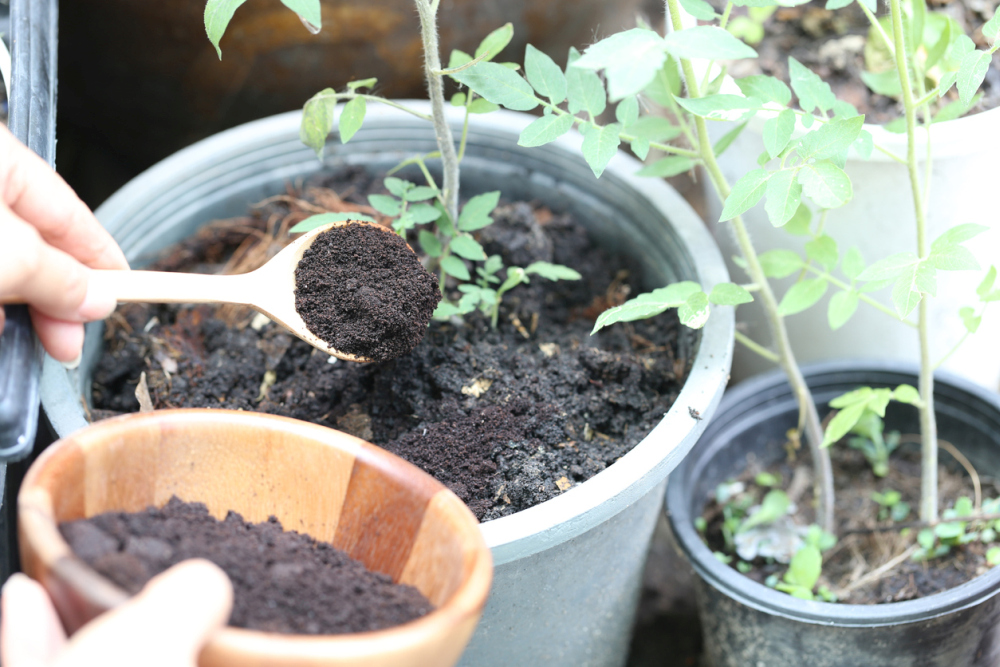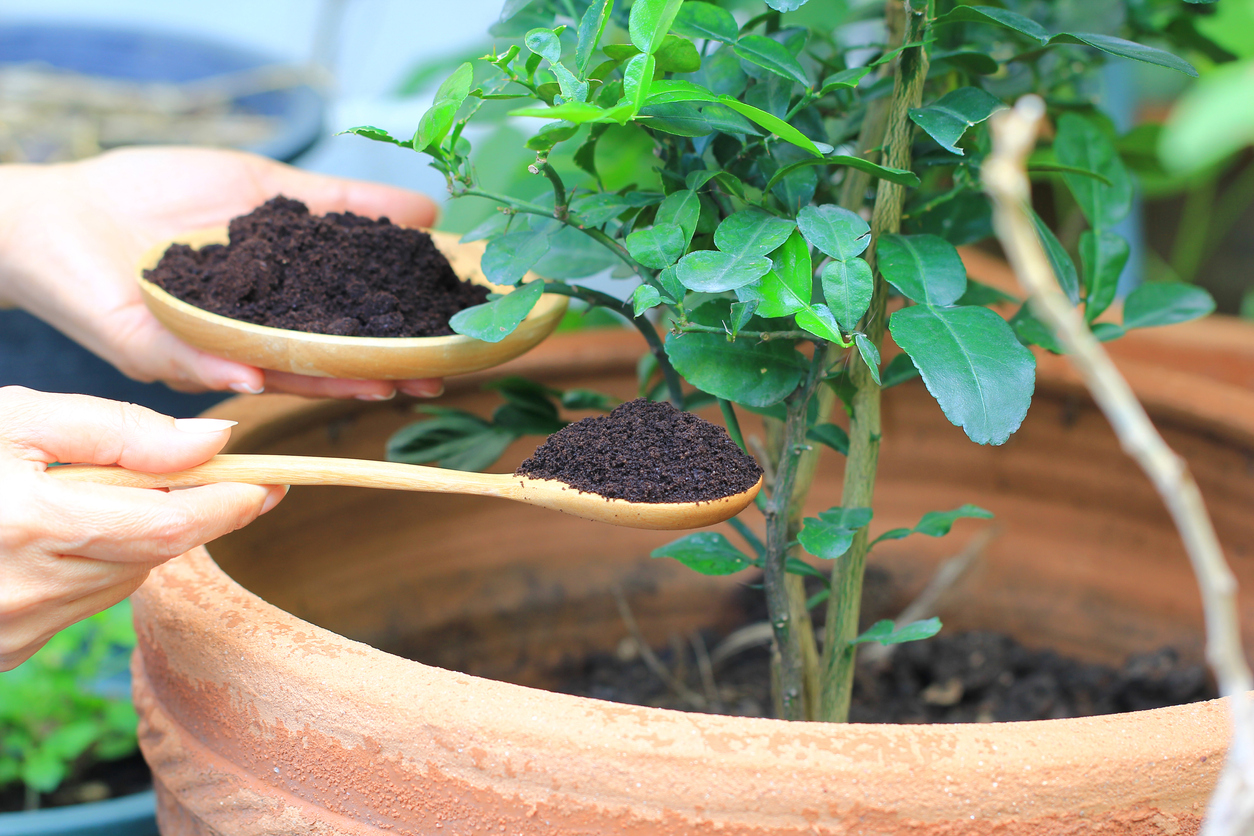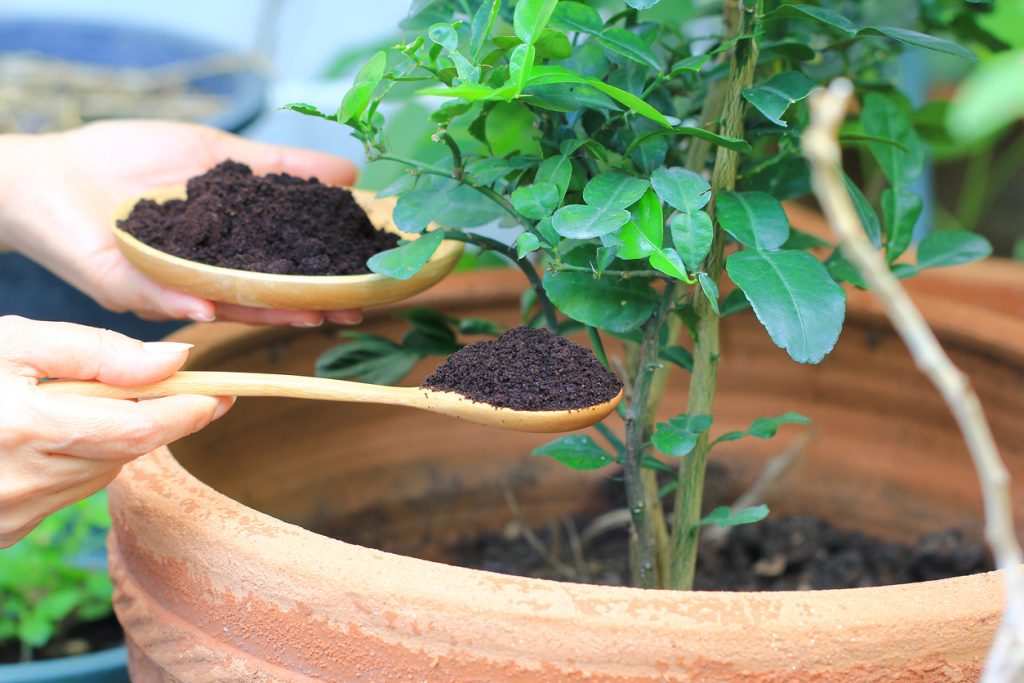Composting With Coffee Grounds – Use Coffee Grounds In Your Garden
Coffee grounds in the garden is a controversial topic that has its ardent proponents and fierce detractors. As we all know, gardening is a vast world of competing ideas, controversies, and personal experiences that are just as valuable as the recommendations of high-brow research and lab studies. And any time you raise the idea of using coffee grounds in the garden, be prepared to start an endless debate with your fellow gardeners.
Some gardeners believe that coffee grounds are the cure-all for your garden ailments from snails and slugs to low nutrition in the soil. Others would warn you that mishandling the used coffee grounds could lead to damaging the tilth and structure of the soil. So which one school of thought should we believe?
Coffee grounds either used directly in the soil or as compost have their undeniable merits. But if you use them on veggies such as broccoli, radish, or leek you will end up with a poor crop. So let’s delve into this sour topic and see how you can use coffee grounds in the garden to your advantage.
All about Coffee Grounds
We are going to let the facts speak for themselves as much as coffee grounds are concerned. According to many respected scientific studies, coffee grounds contain about 2 percent nitrogen of their entire volume. Nitrogen is an important nutrient that feeds the plants and protects them against diseases. It also makes your perennials more resistant to drought and abrupt changes in temperature.
The pH levels in the coffee grounds are pretty much close to neutral. Coffee experts from BrewSmartly say that on average the coffee will have anything between 6.5 and 6.8. In other words, adding coffee grounds to the garden will not increase the acidity of the soil. Furthermore, the trace amounts of acidity that you will find in coffee grounds don’t come from the coffee itself. It’s the ingredients added to the coffee grounds that are acidic.
Another thing that makes coffee grounds a valuable addition to the garden is that they improve the tilth and structure of the soil. This is especially important for clayish soil with high water retention. The coffee in powder form improves the drainage and aeration of the soil.
And if you like to make your own compost, you’ll be pleased to know that coffee grounds added to the compost pile generate a steady temperature between 140 degrees and 160 degrees Fahrenheit. Your worm castings would enjoy such a warm pile of compost. Not to mention that they also feed on the nutritious coffee. So after you finish your morning cup of Joe, don’t throw away the leftover brew. Your garden needs it more than you think.
Benefits of Composting with Coffee Grounds
That all looks good on paper. But what advantages do you get when you actually add coffee grounds to your garden? Are there any tangible benefits that help you get better crops? Indeed there are many benefits. Here are some of them.
- Organic Materials: As a natural plant, coffee beans are rich in organic materials. When you add the coffee to the soil, the good bacteria will break down those organic materials into soluble elements that the roots can absorb.
- Feed Earthworms: Fewer soil inhabitants are as important for the health of your garden as earthworms. Those tiny crawlers encourage the spread of good bacteria and fight off the spread of fungal spores and viruses in the soil. These worms love the coffee grounds in the soil and consider it a good source of food.
- Combat Snails and Slugs: Unlike earthworms and good bacteria, snails and slugs detest the presence of coffee grounds in the soil. So to deter these pests, just mix used coffee grounds with the soil and protect your veggies.
- Improve Soil Aeration: Adding coffee grounds to clayish or heavy soil has the same effect as adding perlite or coarse sand. It improves the aeration and drainage of the soil. However, since the coffee is not acidic, you won’t lower the pH levels of the soil, no matter how much coffee you use.
How to Use Coffee Grounds in your Garden
Needless to say, the benefits of coffee grounds depend not just on when to use the material, but also on how to use it. Luckily, there are easy ways to apply coffee grounds to your garden. Some will be as simple as mixing it with organic materials to create healthy layers of mulch for the plants. Others are more complex. Let’s go through them in more detail.
As Mulch
Mulching is essential for the survival and growth of many plants. It protects the roots and rhizomes of plants against cold weather and hot temperatures. It also suppresses the growth of weeds and invasive plants and deters pests. And that’s where coffee grounds come in. As a good source of mulching, you can mix it with compost or straw to increase its nutritional value.
However, you shouldn’t use coffee grounds alone for mulching. The fine particles of the coffee tend to stick together and form a solid sheet on top of the soil. This can decrease the aeration and limit the oxygen levels in the soil. Also when using coffee grounds as mulch, you should till the soil in advance and stir the layer of mulch from time to time. That will prevent the coffee powder from clumping.
As Fertilizer
Besides nitrogen, coffee grounds also contain decent amounts of potassium and phosphorus. These are the three main components of any good fertilizer. So when you add coffee to the soil, you’re practically enriching it with the essential nutrients that most plants need. Here again, you need to use your best judgment when applying coffee grounds. Only sprinkle it in a thin layer on top of the soil and rake it in vigorously to spread the powder. Some plants such as broccoli don’t do well with coffee since caffeine suppresses the growth of these plants. So don’t use coffee in high quantities as fertilizer. Experts recommend mixing it with compost to reduce the impact of caffeine on the plants. You should also avoid using coffee on seedlings or seeds since it could prevent germination.
In Compost
Every healthy pile of compost needs to have both green and brown materials to nourish and feed the microorganisms while giving something to break down. Green materials are those rich in nitrogen while brown materials are carbon-based. Since coffee grounds have a high concentration of nitrogen, they’re considered green material. So when you add them to your composter, you need to balance the pile with brown ingredients such as leaves, straw, and grass clippings.
The rule of thumb is to add coffee grounds, grass clippings, and leaves in equal portions to the pile. Make sure that the coffee content is not more than a quarter of the volume of the materials in the pile. Mix the ingredients well and keep stirring from time to time. That will prevent the clumping of coffee powder and ensures that the temperature balance is equal throughout the whole pile.
When your compost is ready, you can use it in the same way you use other compost. Although the caffeine in the coffee doesn’t break down during composting, it will be in trace amounts. You can safely use the compost to feed growing plants with little risk.
Coffee Grounds and Pets
So far we have covered both the positive and negative impact of coffee grounds on the soil and plants. But how about their effect on pets in the household. Is it safe to sprinkle the coffee powder all over the garden when you have dogs or cats in the house? No, it’s actually quite dangerous since coffee is toxic for dogs.
The keyword here is sprinkling the coffee grounds in the garden. It’s not clear how much coffee is enough to cause harm to the dogs or cats who ingest it. So to stay on the safe side, consider using your coffee grounds in compost form. That will make it less likely for the inquisitive dog or curious cat to ingest it and have problems with it.
Related: Banana Peel Compost – How To Make And Use Banana Peel Compost In Your Garden
If you still prefer to use coffee directly on the soil, then you should rake the topsoil well after applying a thin layer of coffee leftovers. The raking will mix the coffee powder well with the soil and diminish any risk of your dog sampling the coffee.
Tips for Composting with Coffee Grounds
As you have seen, using coffee grounds either in compost or directly in the garden isn’t without risks. From plants that can’t stand the caffeine in the coffee to dogs sniffing the powdered coffee or licking it off the ground. So how can you still take advantage of the benefits of coffee grounds while keeping the risks at bay? Here are a few tips to guide you along the way.
- If you add the coffee leftovers to a compost pile, make sure to add an equal amount of brown materials such as leaves or grass clippings.
- When applying coffee powder to the soil, sprinkle it in a thin and even layer. Piles of the material turn into clumps when mixed with moisture. They also pose a risk for the pets in your house.
- Cover the coffee leftover with leaves and straw and protect the dogs. This also improves the coffee penetration into the soil.
- For best compost results, add the three components, leaves, coffee grounds, and grass clippings in layers at a ratio of 1:1:1.
- Don’t leave coffee grounds lying around on the surface of the soil. It can lock together and prevent water from making its way into the soil.
- Don’t use coffee grounds either in compost or as a fertilizer near seeds or seedlings. It could inhibit the germination of the seeds and discourage the growth of seedlings and saplings.
- Rich as it is with nitrogen, coffee powder is no substitute for fertilizer. The microbes in the soil feed on the nitrogen in the coffee as they break down the organic materials. Always add a nitrogen-rich fertilizer with the coffee leftovers to encourage the growth of the plants.



